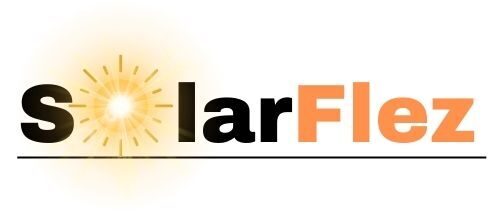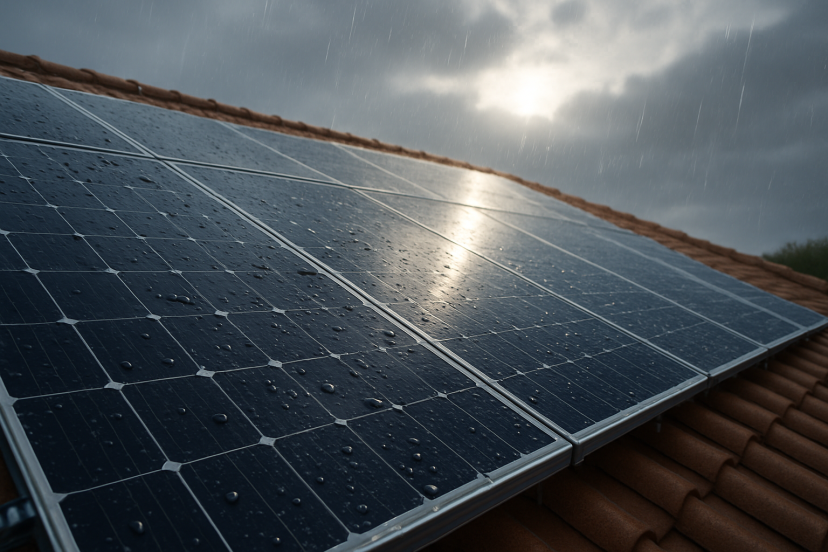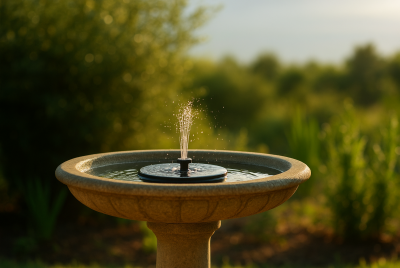Do Solar Panels Work on Cloudy Days? Explained Simply
Imagine waking up to a gray, overcast morning — the kind where the sunlight feels shy and hidden behind a thick curtain of clouds. You sip your coffee, glance at your rooftop panels, and wonder, “Wait… do solar panels even work on cloudy days?”
If you’ve ever had that thought, you’re not alone. It’s one of the most common questions people ask before investing in solar power. The quick response? Indeed, solar panels may function on overcast days, but they are not as effective as they are on bright ones.
Let’s unpack that in plain language — no jargon, no tech talk — just real, honest insight so you can feel confident about how solar really performs when the weather isn’t picture-perfect.
☁️ How Solar Panels Actually Work (Even When It’s Cloudy)
Solar panels work by converting sunlight — specifically photons — into electricity. These photons don’t need direct sunshine to get the job done.
Think of it this way: even when clouds block the sun, some light still makes it through, just like how you can still get sunburned on a cloudy day. That diffuse light keeps your panels producing energy, even if it’s not at full capacity.
In most cases, solar panels generate 10–25% of their usual output during cloudy weather. The exact percentage depends on the type of panel and the thickness of the clouds.
🌦️ Why Solar Works Better Than You Might Think
Here’s something cool: many places with cloudy climates are still leading the way in solar energy adoption.
Take Germany, for example. It’s not exactly known for endless sunshine, yet it’s been one of the top solar producers in the world for decades. That’s because solar panels don’t need scorching heat — just light.
In fact, panels perform better in moderate temperatures than in extremely hot ones. Heat can reduce their efficiency, while cooler weather keeps them performing optimally.
🔋 Real Talk: What to Expect on Cloudy Days
If you live somewhere with frequent cloudy or rainy days (hello, Seattle or London), you might be wondering if solar is worth it. The answer is still a big yes — but with realistic expectations.
Here’s what typically happens:
- Light rain: around 20–30% less production
- Thick clouds: up to 70% less
- Overcast skies all day: expect roughly 10–25% of normal output
But remember — solar energy is a long game. The energy you make on sunny days can offset those cloudier ones through net metering or battery storage.
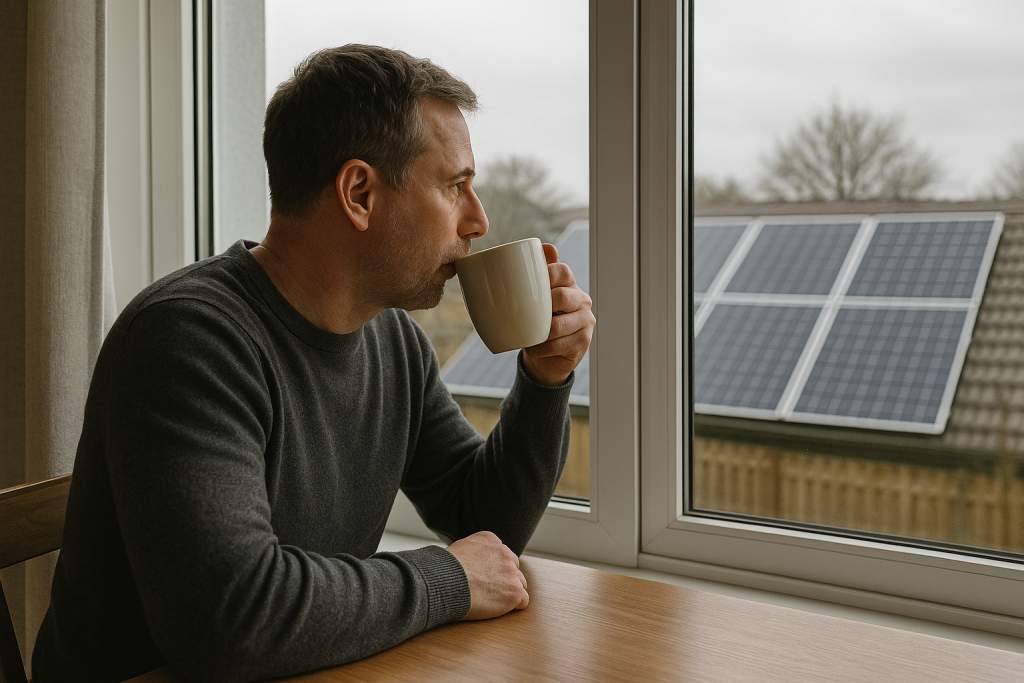
💡 Think of Solar Like a Savings Account
On sunny days, your system “saves up” energy credits by producing more electricity than you use. Then, on gloomy days, you “withdraw” from that balance.
It’s a bit like meal prepping for the week — some days you cook more, other days you reheat leftovers. Either way, you’re covered.
⚙️ The Role of Solar Batteries
Here’s where things get interesting. If you add a solar battery (like the Tesla Powerwall or EcoFlow Delta), you can store the excess electricity your panels produce during bright days.
Then, when clouds roll in, your home draws from that stored energy instead of relying on the grid. It’s peace of mind in battery form.
🌍 Cloudy Regions That Thrive on Solar
Still skeptical? Let’s look at some cloudy regions proving solar works just fine:
- Germany: Cloudy about half the year, yet still a global solar leader.
- United Kingdom: Over 13 GW of installed solar capacity despite its famously gray skies.
- Seattle, USA: Solar systems there can still meet 60–70% of annual home energy needs.
So no — you don’t have to live in Arizona or the Sahara to make solar worth it.
🔧 Types of Solar Panels That Perform Better on Cloudy Days
Not all solar panels are created equal. Some handle cloudy conditions better than others.
1. Monocrystalline Panels
- Efficiency: 18–22%
- Best for: Cloudy and variable climates
- Why: They absorb a wider spectrum of light and perform well in low-light conditions.
2. Polycrystalline Panels
- Efficiency: 15–17%
- Best for: Sunny climates
- Why: They’re cheaper but slightly less effective when sunlight is indirect.
3. Thin-Film Panels
- Efficiency: 10–13%
- Best for: Portable or flexible setups (like RVs and sheds)
- Why: They handle shade surprisingly well but need more space.
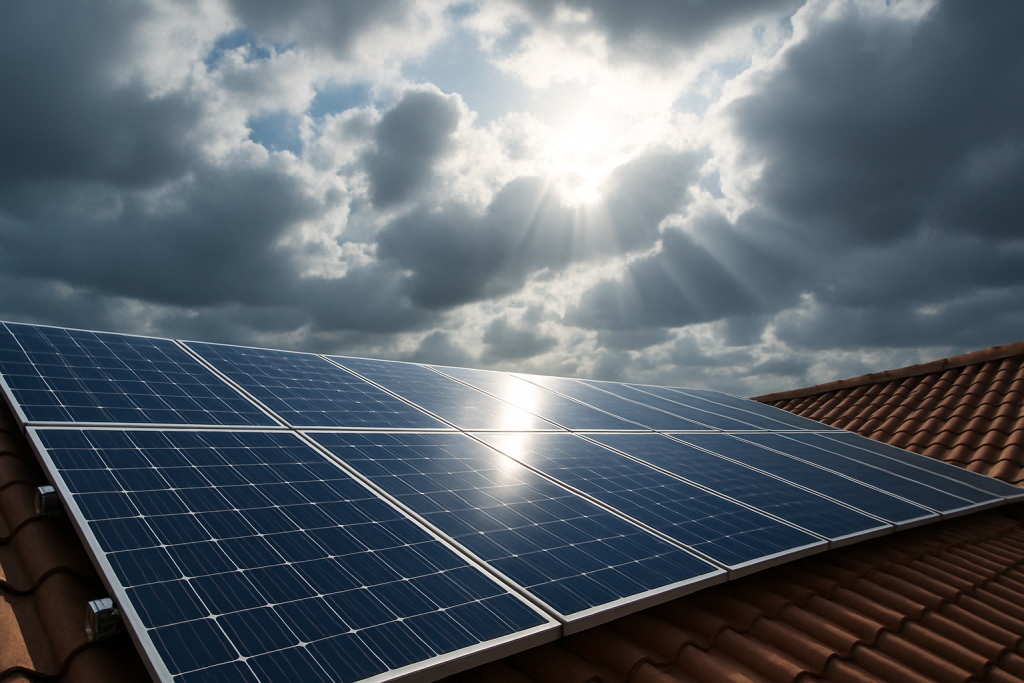
⚡ Microinverters vs. String Inverters on Cloudy Days
Why it matters: On overcast days, light hits each panel differently. With a traditional string inverter, your system’s output can dip to the level of the weakest panel — like one Christmas bulb dimming the whole strand.
Microinverters, on the other hand, allow each panel to convert power independently. This means shaded or partially lit panels don’t drag down the rest of the system.
Real-world perks you’ll notice:
- More consistent energy production during patchy clouds.
- Better performance when trees, chimneys, or neighboring buildings cause shade.
- Easier to monitor — you can track each panel’s output individually.
Quick recommendation: If your roof gets partial shade or you live in a cloudy area, microinverters are worth the upgrade. But if you’ve got a wide-open, sun-drenched roof, a traditional string inverter can still be cost-effective.
🛒 5 Best Solar Panels for Cloudy Climates (Amazon Picks)
Here are some of the top-rated Amazon solar panels designed to work efficiently, even in overcast conditions:
| Product | Efficiency | Type | Key Feature | Rating |
| Renogy 200W Monocrystalline | 21% | Mono | Excellent low-light performance | ⭐⭐⭐⭐⭐ |
| HQST 100W 12V Panel | 20% | Mono | Durable aluminum frame | ⭐⭐⭐⭐ |
| ECO-WORTHY 200W Kit | 19.8% | Poly | Complete starter system | ⭐⭐⭐⭐ |
| Newpowa 220W High-Efficiency | 21% | Mono | Compact, weatherproof design | ⭐⭐⭐⭐⭐ |
| Jackery SolarSaga 100W | 23% | Foldable Mono | Portable and travel-friendly | ⭐⭐⭐⭐⭐ |
1. Renogy 200W Monocrystalline Panel
- Why it’s great: Known for superior low-light performance and durability.
- Pros: Efficient, corrosion-resistant, long lifespan.
- Cons: Slightly pricier.
- Perfect for: Home rooftops and off-grid cabins.
2. HQST 100W 12V Solar Panel
- Why it’s great: Solid build with reliable output even during cloudy weather.
- Pros: Budget-friendly, easy to install.
- Cons: Slightly heavier than newer models.
- Perfect for: Small homes, boats, or RVs.
3. ECO-WORTHY 200W Complete Kit
- Why it’s great: Comes with everything you need — panels, charge controller, and cables.
- Pros: Great for beginners, simple setup.
- Cons: Slightly lower efficiency.
- Perfect for: DIY enthusiasts and solar beginners.
4. Newpowa 220W High-Efficiency Panel
- Why it’s great: Compact yet powerful, ideal for low-sunlight areas.
- Pros: Weatherproof, reliable under diffused light.
- Cons: Limited availability.
- Perfect for: Urban rooftops and off-grid systems.
5. Jackery SolarSaga 100W Portable Panel
- Why it’s great: Foldable and lightweight for outdoor use.
- Pros: Portable, works great for campers and travelers.
- Cons: Not designed for full-home systems.
- Perfect for: Camping, emergencies, or RV living.
🧠 What Science Says About Solar Efficiency on Cloudy Days
Scientific studies confirm that solar panels remain productive under cloudy skies — though at lower levels.
According to a National Renewable Energy Laboratory (NREL) study, high-efficiency monocrystalline panels can retain up to 80% of their peak output in partial sunlight due to their superior photon absorption.
Meanwhile, a 2017 study published in the Journal of Renewable Energy found that ambient temperature and cloud thickness play a larger role in energy reduction than mere sunlight absence. In cooler cloudy conditions, panels actually waste less energy through heat loss.
Translation? Clouds aren’t the enemy — extreme heat is.
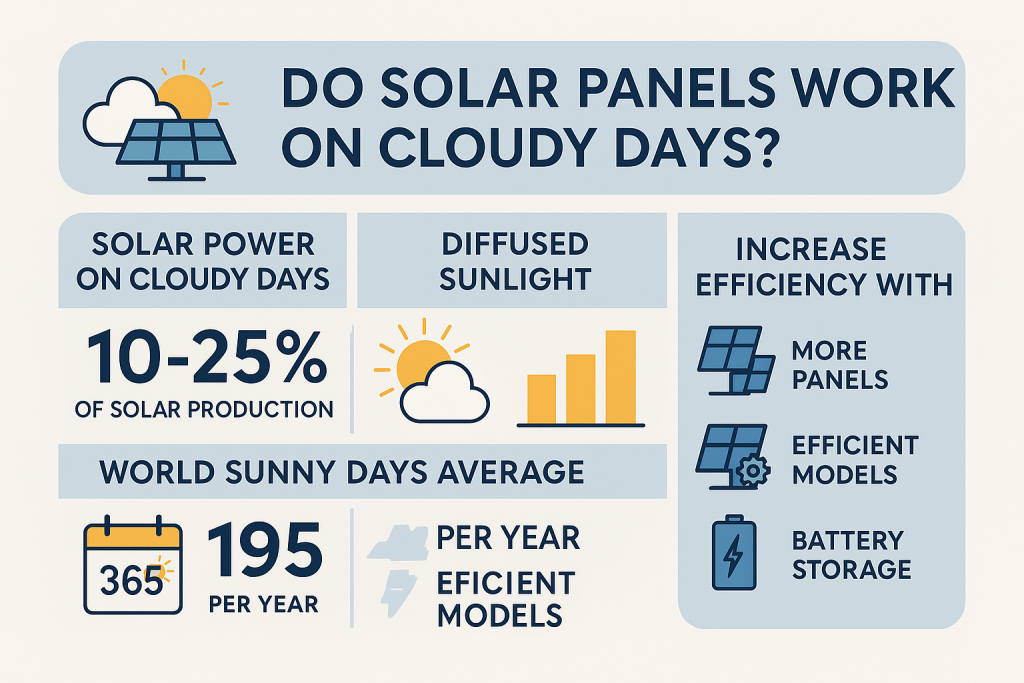
💬 Common Misconceptions About Cloudy-Day Solar
Let’s clear the air (pun intended):
Myth 1: Solar panels stop working when it’s cloudy.
Nope. They still produce power, just at a reduced rate.
Myth 2: Solar is only for sunny regions.
Tell that to Germany, one of the top solar-powered countries in the world.
Myth 3: Rain ruins solar performance.
Actually, rain helps clean your panels, washing away dust that can block sunlight.
⚡ Simple Ways to Maximize Solar Power on Cloudy Days
You don’t have to sit around waiting for the sun to come out. Try these smart moves:
- Keep panels clean: Dust and debris lower efficiency, especially in low light.
- Use microinverters: They optimize each panel individually, improving performance under partial shade.
- Add a solar battery: Store excess energy from bright days.
- Adjust tilt angles: Seasonal adjustments can help capture more diffuse light.
🌞 Planning for Cloudy Seasons
If you live somewhere with long cloudy seasons, like the Pacific Northwest, pair your solar setup with:
- Energy-efficient appliances
- Smart thermostats
- LED lighting
- Battery backup systems
These small shifts ensure your home stays efficient, even when skies are gray.
🔗 Want to Improve Your Solar Setup?
Learn how to boost your off-grid efficiency with smart storage and system design — check out this helpful guide from SolarFlez. It breaks down practical strategies for getting the most from your solar investment year-round.
❓ FAQs
1. Do solar panels operate at night?
No — panels need sunlight to generate power. But with a battery, you can use stored energy after sunset.
2. Can solar panels still be charged when it rains?
Yes, though at lower efficiency. Light still penetrates clouds and raindrops, allowing partial energy generation.
3. Which solar panels are best for cloudy weather?
Monocrystalline panels are best — they perform well in low-light and partial-sun conditions.
4. Do clouds damage solar panels?
Not at all. In fact, cloudy days often come with cooler temperatures that protect your panels from overheating.
5. Is solar still worth it in overcast weather?
Absolutely. Over the course of a year, your sunny days make up for the cloudy ones — and your savings keep adding up.
🌤️ Final Thoughts: Don’t Let Clouds Block Your Solar Dreams
Clouds may dim the sky, but they don’t have to dim your solar goals.
Solar energy isn’t about chasing perfect sunshine — it’s about harnessing what’s available and making it work for you.
So the next time the weather turns gray, look at those panels on your roof and smile. They’re still out there, quietly working, proving that even on cloudy days, you can shine bright.
